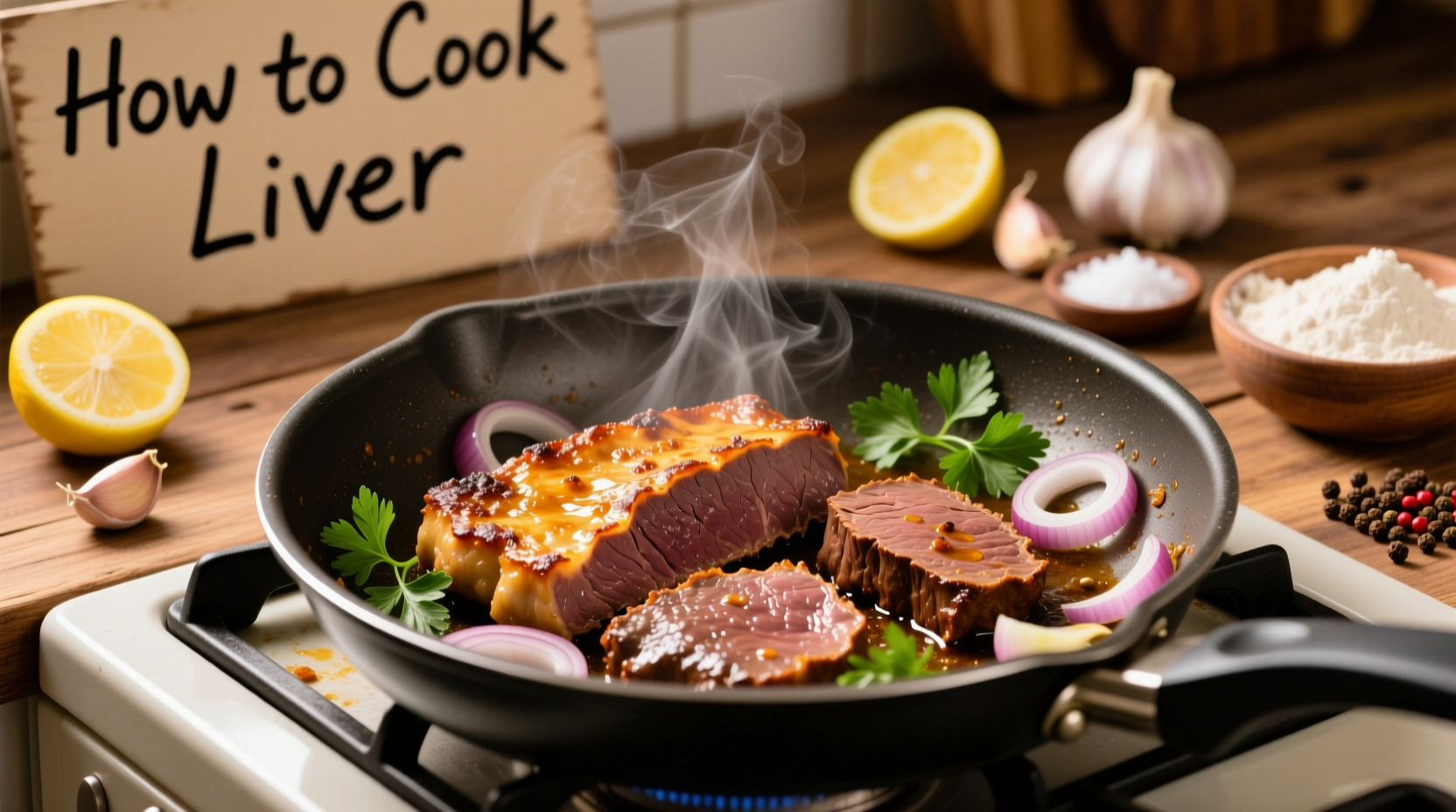The best way to cook liver is by pan-searing it after proper preparation: soak in milk for 30-60 minutes to reduce bitterness, pat dry thoroughly, season simply, and cook 3-4 minutes per side over medium-high heat until internal temperature reaches 160°F (71°C). Avoid overcooking to maintain tenderness.
Many home cooks struggle with liver's strong flavor and tendency to become tough. But when prepared correctly, liver transforms into a rich, creamy-textured delicacy packed with nutrients. This guide reveals professional techniques that guarantee tender, flavorful liver every time—no more rubbery or metallic-tasting results.
Why Liver Cooking Goes Wrong (And How to Fix It)
Liver's reputation for being difficult stems from two main issues: its natural bitterness and quick transition from tender to tough. The key is understanding liver's unique composition. As the body's filtration organ, liver contains higher concentrations of compounds that can create off-flavors when not properly handled.
| Liver Type | Flavor Profile | Best Cooking Method | Prep Time |
|---|---|---|---|
| Beef Liver | Strongest, earthy | Quick sear | 45-60 min soak |
| Calf Liver | Milder, delicate | Pan-fry medium heat | 30 min soak |
| Chicken Liver | Creamy, subtle | High heat sear | 20 min soak |
| Lamb Liver | Distinctive gamey | Marinate first | 60+ min soak |
Selecting Quality Liver: What Supermarkets Don't Tell You
Fresh liver should have a moist but not wet surface with a uniform color—deep red for beef, purplish-red for calf, and deep burgundy for chicken. Avoid any with grayish spots or dried edges. The USDA recommends purchasing liver from refrigerated cases kept below 40°F (4°C) and using within 1-2 days of purchase for optimal freshness.
For the best results, seek out liver from pasture-raised animals. These typically have milder flavor profiles due to more natural diets. When shopping, look for "sweetbreads" labeling which indicates higher quality cuts from younger animals.
Essential Preparation Techniques
Proper preparation makes the critical difference between enjoyable and inedible liver:
The Milk Soak Method (Science-Backed)
Soaking liver in milk for 30-60 minutes neutralizes bitter compounds through casein proteins binding with off-flavor molecules. Whole milk works best due to higher fat content. For stronger livers like beef or lamb, add 1 tablespoon of vinegar per cup of milk to enhance the process.
Slicing for Success
Cut against the grain into 1/4 to 1/2 inch thick slices. Thinner slices cook more evenly and prevent the exterior from overcooking before the interior reaches proper temperature. Uniform thickness ensures consistent results across all pieces.
Drying is Non-Negotiable
After soaking, pat liver completely dry with paper towels. Moisture creates steam during cooking, preventing proper browning. Let sit 5 minutes after drying to ensure surface moisture evaporates—this crucial step makes the difference between seared and steamed liver.

Mastering the Cooking Process
Temperature control separates good liver from great liver. Follow these professional steps:
Pan Selection Matters
Use a heavy-bottomed cast iron or carbon steel skillet. These materials retain heat consistently and develop the perfect crust. Preheat the pan for 5 minutes over medium-high heat before adding oil—this prevents sticking and ensures immediate searing.
The Right Oil
Choose oils with high smoke points: avocado oil (520°F), refined coconut oil (450°F), or clarified butter (450°F). Avoid olive oil which burns at lower temperatures and creates bitter compounds.
Cooking Timeline: Precision Timing
The evolution of liver cooking techniques shows why timing is critical:
- Pre-1950s: Liver often boiled for extended periods (tough results)
- 1950-1980s: Pan-frying became popular but often overcooked
- Modern approach: Precision temperature control with digital thermometers
For perfect results:
- Heat oil until shimmering but not smoking
- Add liver in single layer with space between pieces
- Cook 3-4 minutes without moving for crust development
- Flip and cook 2-3 minutes more
- Check internal temperature—160°F (71°C) is food-safe
- Rest 3 minutes before serving
Flavor Pairing Strategies That Work
Liver's richness pairs beautifully with specific accompaniments that balance its intensity:
Acidic Elements
A splash of lemon juice, red wine vinegar, or balsamic reduction cuts through richness. Try finishing with a quick pan sauce: after removing liver, add 1/4 cup broth, 2 tablespoons vinegar, and 1 tablespoon butter to the hot pan, scraping up browned bits.
Sweet Counterpoints
Caramelized onions remain the classic pairing—slow cooking draws out natural sugars that complement liver's earthiness. For modern twists, try apple slices sautéed with thyme or a fig reduction.
Herb Selection
Strong herbs stand up to liver's flavor: rosemary, thyme, and sage work better than delicate herbs like parsley. Add during the last minute of cooking to preserve fresh flavor.
Avoiding Common Mistakes
Even experienced cooks make these critical errors:
- Overcrowding the pan: Creates steam instead of sear—cook in batches if needed
- Using low heat: Prevents proper crust formation and leads to rubbery texture
- Skipping the rest period: Cutting immediately causes juices to escape
- Ignoring thickness: Adjust cooking time based on actual thickness, not just time
Serving and Storage Guidelines
Serve liver immediately after the resting period for optimal texture. Pair with mashed potatoes, roasted root vegetables, or a simple green salad. Leftovers should be cooled quickly and stored in airtight containers.
USDA guidelines state cooked liver remains safe for 3-4 days in the refrigerator at 40°F or below. When reheating, use low temperatures to prevent further cooking—microwave at 50% power or warm gently in a covered skillet with a splash of broth.
Context Matters: When to Adjust Your Approach
Liver cooking requires flexibility based on specific circumstances:
- For sensitive palates: Increase milk soak time and pair with stronger flavors
- With older liver: Marinate 2-4 hours in buttermilk to tenderize
- For quick meals: Use chicken liver which requires less prep time
- When entertaining: Opt for calf liver which has the mildest flavor profile











 浙公网安备
33010002000092号
浙公网安备
33010002000092号 浙B2-20120091-4
浙B2-20120091-4